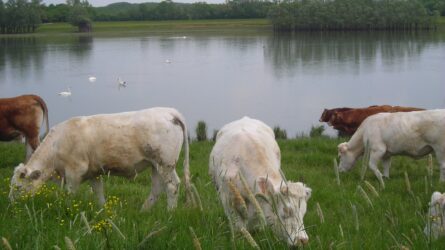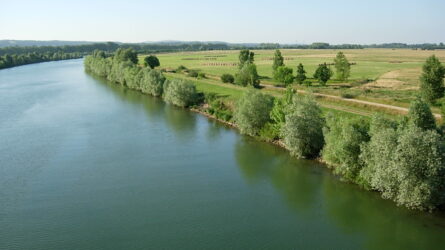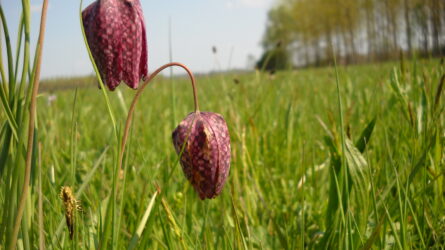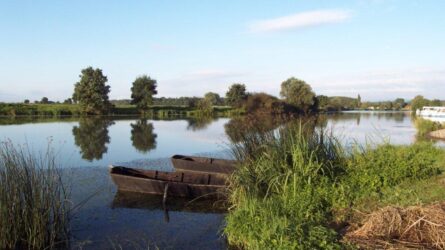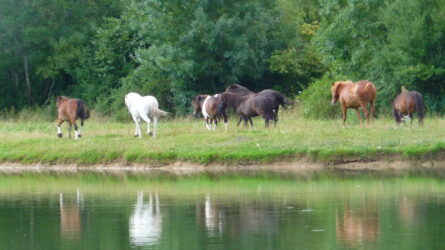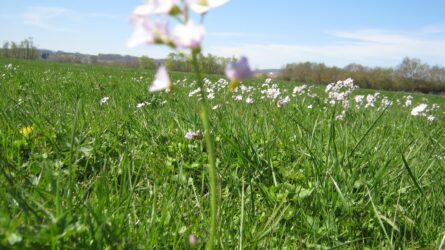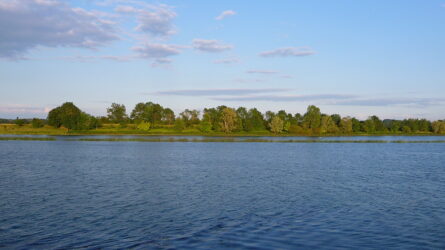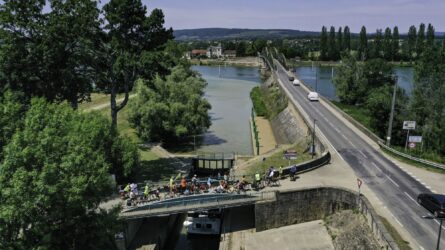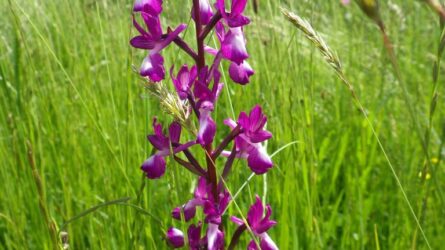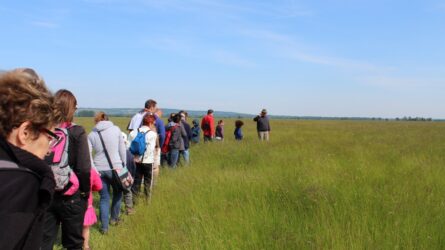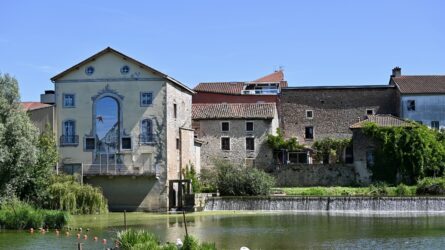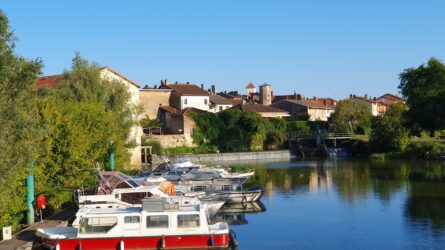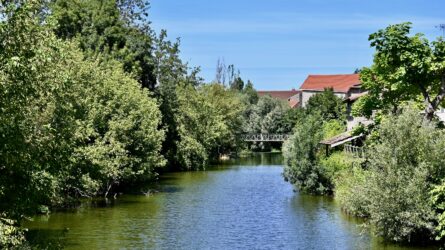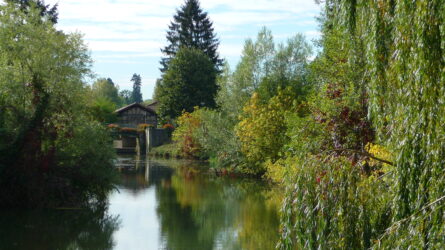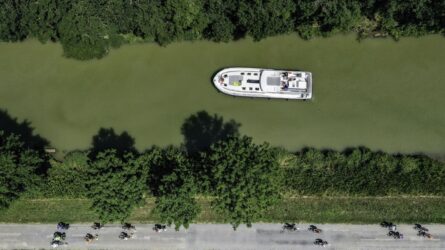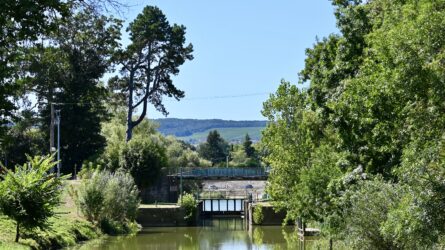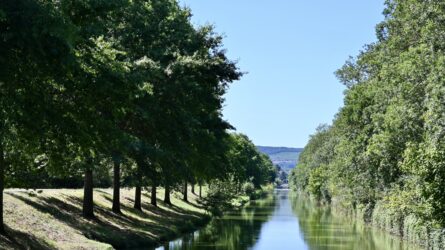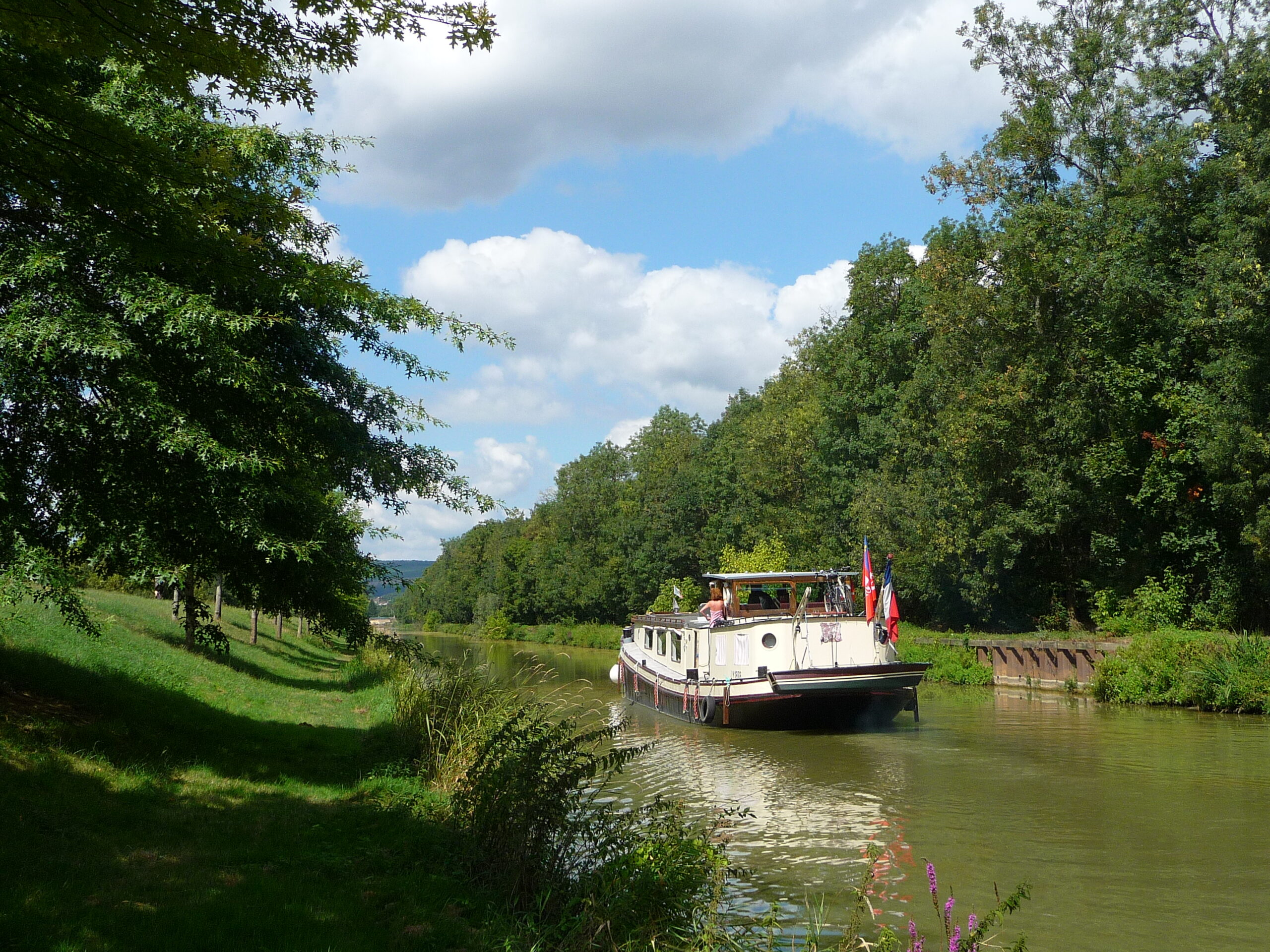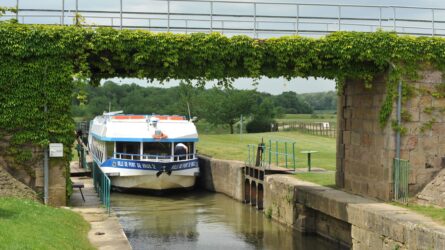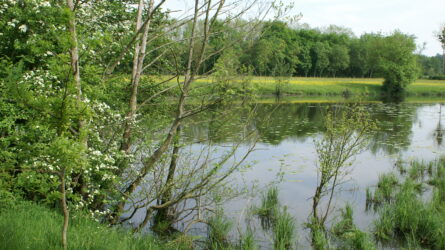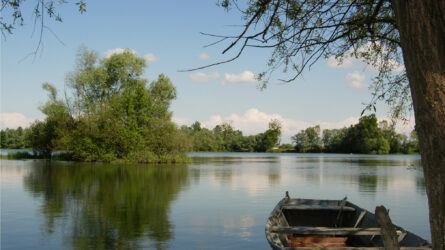
The Saône, the rivers and the canal
Preserved wildlife and popular fishing sites
The Saône rises in Vioménil in the Vosges and after 480km flows into the Rhône at Lyon. It traces the western border of the department of Ain. The river is shallow and is characterized by the gentle regularity of its flow. For 300 years, boats have been sailing on the Saône. Emperor Julius Caesar was one of the first to name the river “Arar”, whose “course is so prodigiously slow that the eye cannot see which way its waters are headed”, shortly afterwards it took the term Sauconna designating “a deity of the waters” before becoming “Saône”.
From Pont-de-Vaux to Replonges, the landscape is shaped by the winter floods of this river which extend on the left bank on the large floodplain meadow of the Val de Saône , classified as a Sensitive Natural Area of the Ain department. This phenomenon gives rise to an exceptional natural environment where nearly a hundred nesting birds and nearly 400 species of flowers, 40 of which are protected, have taken up residence. Among the protected species we can find the loose-flowered orchid, the fritillary, etc. It is important to know that 20% of the French population of curlews, black-tailed godwits and corncrake are also found here.
The Saône is a delight for catfish fishermen or night carp fishing enthusiasts , which is allowed all year round on the SA28 left bank (Pont-de-Vaux), upstream PK 98.800 and PK 97.600 downstream over a length of 1400 metres, and on the SA34 left bank (Feillens, Rplonges, Grièges), upstream limit PK 85.000 and downstream limit 76.500 over a length of 8.5 km.
The Seille or the old Seille in Sermoyer which borders the northern part of our territory in the commune of Sermoyer. is one of the most beautiful navigable rivers in France. It has its source in the first foothills of the Jura (Grotte de Baume les Messieurs). Its length is 114 km from its source to La Truchère where it flows into the Saône. Its depth is 3.50 m but can reach up to 7 m in some places. It was a privileged route for the trade of salt from Lons le Saunier and Salins. It is a river popular with fishermen who fish for white fish or catfish.
The Reyssouze is a tributary of the Saône which rises in Journans in the Bugey (Ain) and flows after a 75 km course through the Bresse into the Saône on the border of the communes of Pont-de-Vaux and Reyssouze. This river, whose course is slow, even and peaceful, has been punctuated by mills since the Middle Ages and renowned for fishing for white fish (zander, pike, bleak or gudgeon…).
The Pont-de-Vaux canal Imagined by Louis Auguste Bertin and the people of Pontevalle in the eighteenth century to avoid the meanders of the Reyssouze and facilitate the trade then in full expansion in the small town of Bress. Designed by Léonard Racle, Voltaire’s architect in Ferney, the Pont-de-Vaux canal was
The Loëze is a small river that winds from Bâgé-Dommartin to Feillens where it flows into the Saône. Fishing with gear and nets downstream of the Chintres bridge is allowed there. AAPPMA Le Goujon de la Loëze in Feillens www.aappma.laloeze.fr
Federal fishing permits (daily, weekly or annual) are on sale in our reception offices or on www.cartedepeche.fr (local AAPPMA Le Goujon de la Loëze https://www.aappmalaloeze.fr/)
